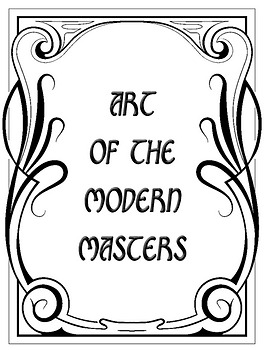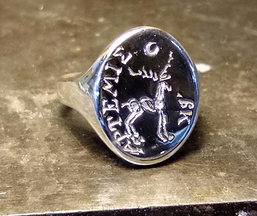Nettie Depp Sculpture for Kentucky State Capitol Building


Please visit Monumental Women of Kentucky for full project details and history of Depp.
In 2014 while researching gender equity issues for another project, Amanda Matthews came across an article from September 2014 in the Courier Journal, which stated "In fact, the closest thing to a woman honored by a full-scale statue on public property in Kentucky is Carolina, Gen. John Breckinridge Castleman's horse.” Thus began Matthews’ commitment to honor a woman in the most esteemed building in the Commonwealth of Kentucky, the Capitol, for the first time in Kentucky’s 230-year history.
Brief History of Project
Beginning – 2014
In the beginning stages of this project (2014-2015), Matthews worked closely with Eleanor Jordan, who was appointed by Governor Steve Beshear as Executive Director of the Kentucky Commission on Women, an agency of the Office of the Governor. Jordan is also a former Kentucky State Representative, having served from 1996-2000, and now serves as an Honorary Member of the recently formed Monumental Women of Kentucky Committee. Jordan had recently spoken in 2013 at the dedication of the Historical Marker honoring Depp when she and Matthews met. Ultimately, Jordan and the Commission on Women decided to select Depp as an appropriate candidate to honor with a bronze sculpture intended for placement in the Kentucky State Capitol building.
In December 2015, Governor Matt Bevin took office. Matthews then began working with Leslie Nigels, State Curator of the Historic Properties Advisory Commission (HPAC).
Unanimous Vote – 2017
In 2017, HPAC offered a unanimous vote in support of the sculpture honoring Depp for the State Capitol.
Monumental Women of Kentucky – 2020
In 2019, Governor Andy Beshear took office. In 2020, the Monumental Women of Kentucky Committee formed as a state government-organized committee comprised of 14 members under the umbrella of HPAC. The committee is tasked to oversee the process of ensuring that Kentucky welcomes its first monument honoring a woman, Nettie Depp, in the State Capitol.
Design of Bronze Sculpture, Details & Symbolism
Stance
Nettie Depp’s commemorative monument portrays her stance as slightly contrapposto, which was born in Classical Greek sculpture and later revived in Renaissance sculpture. Depp is looking down slightly, and although rare for a visionary to be portrayed this way, it is quite intentional. The artist believes this will represent her connection to and advocacy for children, who will view her likeness from a lower-than-eye-level position.
Clothing
1910-1920 period-specific clothing and shoes chosen for Depp reflect a similar style worn by her in photographs, while also representing couture appropriate for someone visiting the State Capitol during that time. She is wearing an Edwardian style vested suit with a lace shirt and ascot.
Book held by Depp
The book design is a bold and significant symbol of the sculpture, rendered in the Art Nouveau style (1837-1901). It represents conveyance of knowledge in general, as well as the fact that Depp prioritized the addition of art classes to the school curriculum while in office. It also reflects the importance of public art as a catalyst for positive social change. Clearly displayed is the work of noted American female sculptor, Anne Whitney, who was on the front end of the New Woman movement and fought for women's rights, education rights, and the abolition of slavery.
The book title reads Art of the Modern Masters and prominently showcases Whitney’s revolutionary 1864 sculpture, Africa, of a beautiful African American woman. Africa represents a black woman rising from bondage and is titled as such purposely to advocate for the emancipation of an entire race of human beings. Created during the Civil War, it clearly and profoundly expresses Ms. Whitney’s beliefs about the abolition of slavery. It was exhibited in Boston and New York in 1864 and 1865.
Whitney, who was one of the few female sculptors to achieve success in the 19th century, believed that rather than follow an “acceptable path for women” in the mid-1850s to explore her interest in poetry, she could more fully express her viewpoints about social causes through art.
Hat and Hatpin
Hats and hatpins were all the rage in the early 1900’s. It would be an obvious omission of period details to leave out such an iconic part of women’s couture during that time. “The bigger the better” was the popular idea surrounding hatpins as well. Depp is wearing a woman’s fedora style hat, adorned with a bold poppy flower on the front, commonly considered a symbol of suffrage. Her dragonfly hatpin was an ostentatious sign of the times. The dragonfly serves as a strong representation of wisdom and transformation. Finally, the feathers reach prominently upward and serve as a sign of high honor (not yet shown in images).
Signet Ring
The signet ring portrayed in the sculpture was inspired by Depp’s own signet ring. Although her ring is clearly visible in images, the details of it are not. The new design of the signet ring includes the symbol of the goddess moon, the name ARTEMIS spelled in classic Greek letters, the sacred deer of Artemis which symbolizes new adventures, and finally the date of 2020 written in the Greek numbers of BK, which are also the artist’s mother’s initials. (Image on left below)
Buttons
The jacket buttons were designed and hand-engraved in the Edwardian style (1901-1914). Sleek and beautiful, they feature different dog silhouettes, which is typical of this era and a playful nod to Depp’s connection to children. (Image on right above)
Cameo
The cameo was inspired by Depp’s actual lyre-shaped cameo. The lyre is an attribute of the Greek god Apollo, representing music and wisdom. Depp also added music courses to the curriculum in Barren County schools. The re-design of the cameo includes the moon symbol and face of the Greek goddess Artemis, who was known for “illuminating the darkness.” Artemis’ virtues, noticeably similar to Depp’s own moral values, include:
-
Defending human and civil rights
-
Protecting the vulnerable
-
Defending the powerless and underrepresented
-
Fostering education and health
-
Eliminating prejudice and discrimination







